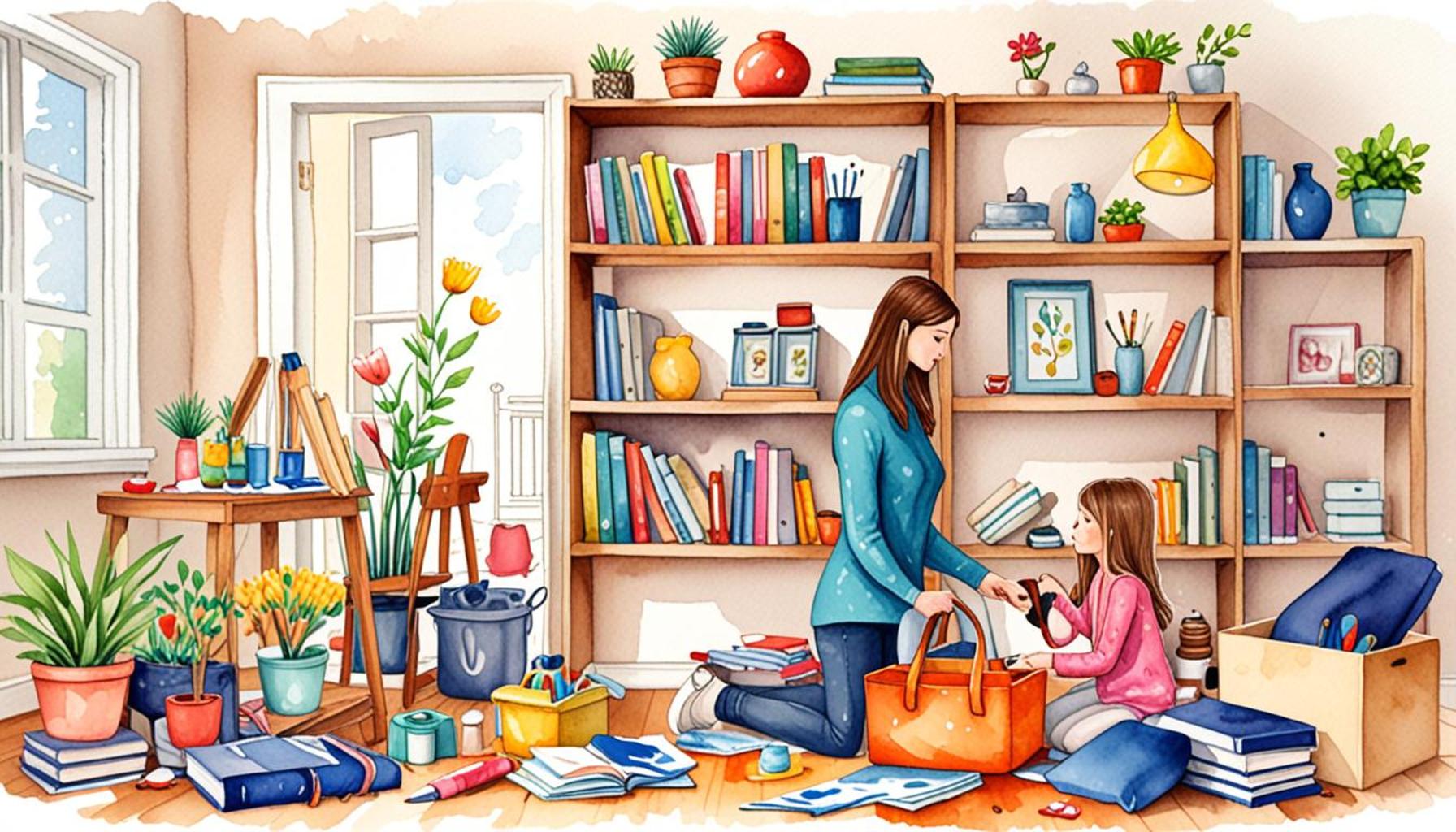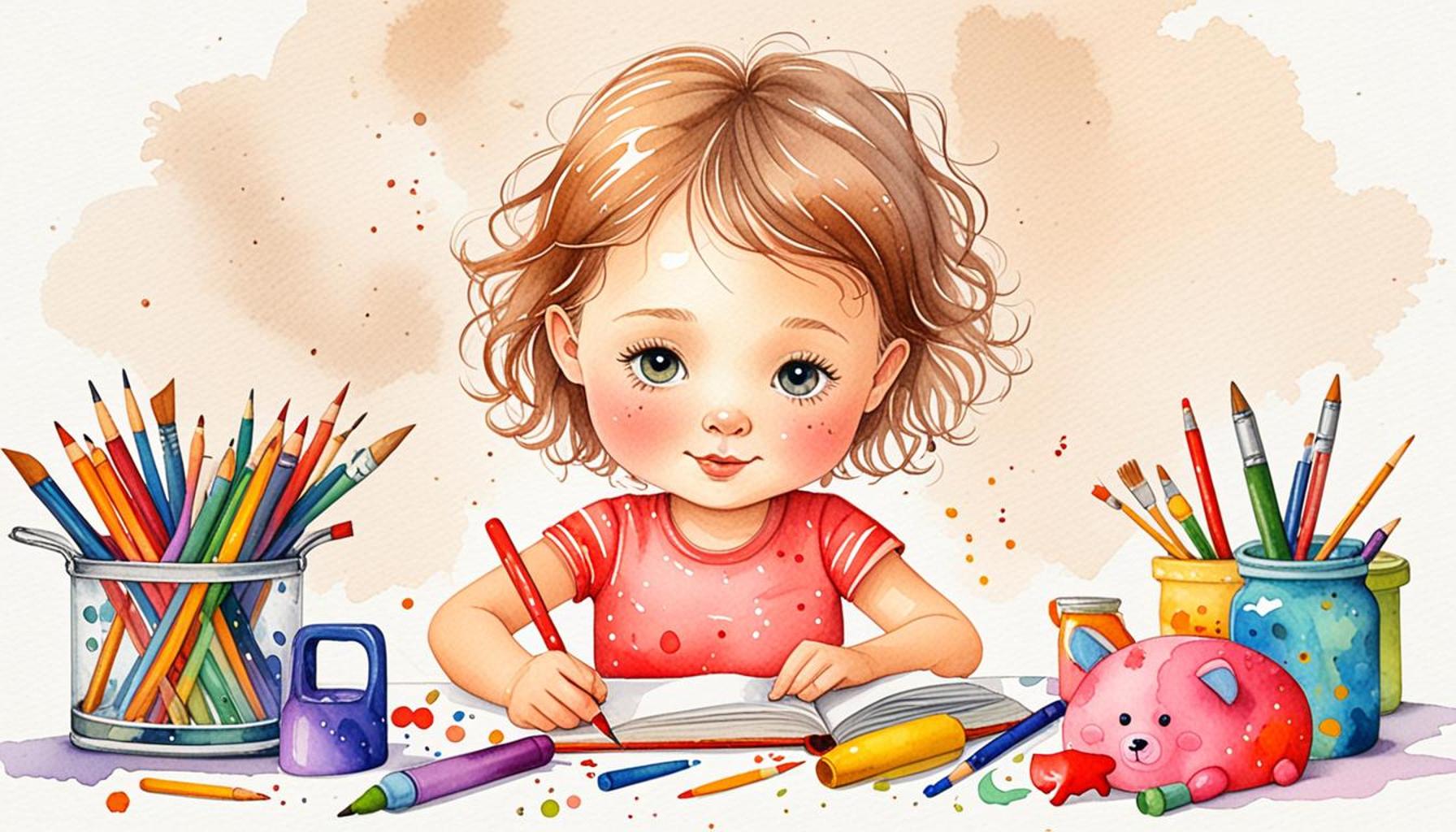Decluttering with Family: Strategies to Involve Everyone in Household Organization

Embrace the Challenge of Decluttering
While clutter can easily take hold of any living space, uniting as a family to tackle this task can transform what is often perceived as a chore into a shared adventure. By involving family members of all ages, from grandparents to toddlers, you not only clear out unwanted items but also cultivate essential life skills and foster a sense of community within your home. Engaging in decluttering can lead to a cleaner, more organized environment, while also imparting valuable lessons on organization and teamwork.
Teamwork is a vital aspect of any successful household endeavor. When family members of different ages come together, they learn the importance of communication and cooperation. For instance, older siblings can assist younger ones by explaining why certain toys or clothes might need to be discarded, offering a chance for mentorship and wholeness within the family dynamic. These collaborative efforts can lead to a smoother decluttering process and reinforce the idea that chores can be a collective responsibility rather than an individual burden.
The act of decluttering also instills a sense of responsibility among family members. By assigning specific tasks to each person—be it sorting through old clothes, organizing the garage, or cleaning out the pantry—everyone can take ownership of their contributions. This not only emphasizes accountability but also encourages family members to appreciate their belongings more. Studies have shown that teaching children about responsibility at a young age can cultivate strong organizational skills they will carry into adulthood.
Additionally, the shared experience of decluttering becomes a unique opportunity for bonding. Imagine spending a Saturday morning together, music playing softly in the background, as you reminisce over old photos or discover forgotten treasures. These moments can lead to laughter, storytelling, and even the creation of lasting memories that reinforce familial bonds. This collective effort not only results in a decluttered home but also enriches your relationships with each other.
Strategies for a Successful Family Declutter
To transform the decluttering process into a fulfilling family project, implement some effective strategies:
- Set clear goals: Identify which rooms or areas need immediate attention and discuss them as a family to prioritize appropriately. For example, you might decide that the children’s playroom should be tackled first, as it often becomes a clutter hotspot.
- Create a schedule: Establish a timeline for when and how often you will declutter as a family. This way, everyone can prepare mentally and physically, ensuring long-term commitment rather than a one-off event.
- Make it fun: To lighten the atmosphere, incorporate games, friendly competitions, or rewards for completing tasks. Perhaps the family can have a competition to see who can fill the most boxes for donation, with a small treat for the winner at the end—this could be a family movie night or a special dessert!
With an organized approach, decluttering might just become one of the most significant family projects you engage in. The results—both tangible and intangible—will likely surpass any initial reluctance. Not only will you enjoy a more organized living space, but you will also establish a foundation of good habits that can benefit your family for years to come. Consider embarking on this journey today; the rewards are plentiful, and the lessons learned are invaluable.
Dive deeper: Click here for more insights
Creating a Collaborative Decluttering Environment
When embarking on the journey of decluttering with family, the key to success lies in fostering an environment where everyone feels involved and valued. It’s essential to communicate openly and set a positive tone for the task ahead. One effective way to achieve this is by holding a family meeting where everyone can express their thoughts about the clutter and share their personal spaces that might resonate with them. This initial conversation not only lays the groundwork for a unified approach but also empowers each family member by giving them a voice in the process.
One of the most successful strategies for transforming chaos into order is to divide and conquer. This method involves breaking down the decluttering task into manageable segments, which can be both accessible and less daunting. For instance, instead of trying to declutter the entire house in one day, consider tackling one room or area per week. By doing this, families can maintain momentum without becoming overwhelmed. Each family member can claim a specific space, whether it be a closet, a garage corner, or their own bedroom, ensuring that everyone contributes while also taking pride in their achievements.
Creating a checklist can further enhance the decluttering process. This serves as both a roadmap and a motivational tool, allowing everyone to track their progress. An effective checklist for decluttering might include the following:
- Evaluate what to keep, donate, or discard: Encouraging family members to make decisions about their belongings ensures that the process is both personal and meaningful.
- Establish a timeline: Setting deadlines for each area can help maintain focus and keep procrastination at bay.
- Identify sentimental items: By allowing a separate category for cherished belongings, families can navigate emotional attachments while still making necessary space.
- Organize a donation drive: Planning a family outing to drop off items at a local charity can turn the task of letting go into a rewarding experience.
Furthermore, incorporating technology into your decluttering efforts can make the process more engaging, especially for younger family members. Consider using apps that assist with organization or digital inventories that can track what stays and what goes. This not only simplifies the decluttering process but also provides a modern twist that resonates with tech-savvy children and teens. Together, families can even create a digital scrapbook of items that are let go, preserving memories while making room for the future.
As you embark on this decluttering journey, remember that patience is crucial. The goal isn’t merely to tidy up but to form lasting habits that promote ongoing organization. By nurturing a collaborative atmosphere and working together, families not only reclaim their living spaces but also strengthen their bonds, making the journey just as rewarding as the destination.
| Category | Description |
|---|---|
| Involvement Techniques | Utilizing family meetings to discuss decluttering goals can enhance communication among members. |
| Motivational Strategies | Creating challenges, such as “who can declutter the most items”, fosters friendly competition and engagement. |
| Time Management | Establishing specific times for decluttering sessions helps create a routine, making involvement seamless. |
| Celebrating Success | Rewarding the family after achieving decluttering milestones can reinforce collaboration and continued participation. |
In this section, explore various strategies for involving the entire family in the decluttering process. Begin with effective communication techniques such as regular family meetings to discuss organizational goals and challenges. This could not only promote input but also foster a sense of unity as everyone’s voice is heard. Alongside communication, introduce fun motivational tactics that get everyone excited about household organization. For instance, setting up competitions for who can declutter the most or creating themed decluttering days can inject some excitement into the mundane task of tidying up. Additionally, emphasize the importance of time management—designating specific days or hours for decluttering can help establish a clear routine, making it easier for family members to participate. Finally, don’t overlook the power of celebrating successes, no matter how small. Recognizing and rewarding achievements strengthens family bonds and encourages a continuous collaborative spirit in maintaining an organized home.
DON’T MISS: Click here to learn how mindful consumption can boost sustainability
Embracing Fun and Creativity in the Decluttering Process
Decluttering doesn’t have to be mundane; in fact, it can be an opportunity for creativity and fun. By integrating activities that spark joy and excitement, families can transform this necessary task into an enjoyable bonding experience. An engaging way to kickstart decluttering is through a fun-filled game that encourages participation from everyone. For instance, consider hosting a “Declutter Challenge” where family members race against the clock to see who can bag the most items for donation within a specific time limit. Such challenges not only energize the atmosphere but also foster a spirit of healthy competition, making the process feel less like a chore.
Moreover, theme days can add an exciting twist to decluttering efforts. Designate Saturdays as “Funky Sock or Hat Day” where everyone wears their most outlandish accessories while sorting through their belongings. This light-hearted approach reduces the seriousness often associated with cleaning and makes the process memorable. Activities like these create opportunities for laughter and memories, helping to reinforce family unity while tackling the clutter.
Incorporating crafts into the decluttering process can also heighten engagement levels. As family members sift through old toys, clothes, or other possessions, they can identify items that can be repurposed. For example, old T-shirts can be transformed into shopping bags, or mismatched socks can become quirky puppets during family storytime. Not only does this promote recycling and creativity, but it also helps children appreciate the value of their belongings, instilling a sense of responsibility towards their possessions.
Aside from the fun elements, fostering respectful discussion about belongings is essential, especially when it comes to sentimental items. This is where emotional intelligence comes into play. Encourage family members to share stories behind certain objects they wish to keep or donate. This platform for sharing enables emotional connections, allowing individuals to articulate why a particular item holds significance for them. Engaging in such dialogues can help children learn valuable lessons about attachment and detachment, guiding them towards more mindful consumption and organization in the future.
Utilizing the concept of teamwork during the decluttering journey is also a strategic approach to enhance involvement. Assign roles based on individual strengths; for instance, someone who loves organizing can focus on sorting, while another who enjoys discarding can oversee the donation pile. Consider creating a rotating schedule where family members switch roles throughout the process, ensuring everyone experiences various aspects of decluttering. This strategy not only prevents monotony but also empowers each member by recognizing their unique contributions.
Ultimately, the way decluttering is approached can significantly impact everyone’s willingness to participate. By weaving in elements of fun, creativity, and teamwork, the family can successfully create an atmosphere of cooperation that makes the task of household organization inviting rather than burdensome. It is about more than just clearing out excess; it’s about nurturing family relationships while building habits that will ensure a clutter-free home for years to come.
DISCOVER MORE: Click here to learn about mindful consumption
Conclusion: Transforming Decluttering into a Family Affair
In the grand scheme of maintaining a harmonious home, decluttering serves as a vital component that can cultivate both space and shared experiences among family members. The strategies outlined throughout this article highlight how involving everyone in the household can transform the often-daunting task of organization into a cohesive and enjoyable journey. When infused with elements of fun, creativity, and teamwork, decluttering becomes much more than mere tidying up; it evolves into a rewarding family event that strengthens bonds and fosters invaluable life skills.
By implementing engaging activities like “Declutter Challenges,” theme days, and crafting sessions, families can foster a sense of ownership and collective responsibility towards maintaining their living spaces. This collaborative spirit encourages effective communication, making the process not only efficient but also heartwarming as family members share stories and sentiments linked to their possessions. The lessons learned—about attachment, minimalism, and the value of teamwork—will resonate long after the clutter has cleared.
Moreover, creating an inclusive environment where every family member feels empowered to contribute reinforces the notion that organization is not just a household duty but a shared familial ideal. Whether through role rotation or purposeful discussions around treasured items, the journey of decluttering can be a gateway to deeper understanding, respect, and appreciation for one another’s perspectives.
Ultimately, a clutter-free home is a reflection of the joy and collaboration found within its walls. As families embark on this decluttering adventure together, they are not only organizing their physical spaces but also crafting lasting memories that enhance their connections. Embrace the challenge, foster participation, and enjoy the transformative experience of decluttering as a family.


